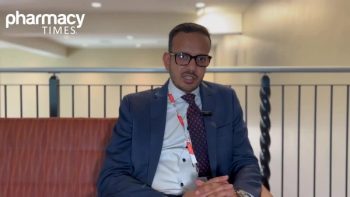
7 Ways Pharmacists Can Counsel Against Opioid Abuse
Opioid abuse is a national epidemic, but there are many tools that pharmacists have to help decrease this problem on an individual level.
The rise in prescription narcotic abuse coupled with the increase in heroin use has more than doubled the drug overdose death rate in the United States over the past 10 years. This death rate has risen from 3.1 deaths per 100,000 individuals ages 12 to 25 in 2001 to a staggering 7.3 deaths per 100,000 individuals in the same demographic in 2011.
On any given day, it is possible that a pharmacist is dispensing an opiate to a patient who has never taken this category of medication before. Did this patient receive appropriate pharmacist counseling, or was he or she handed the prescription and sent on his or her way?
In addition to being medication providers, pharmacists have taken on the responsibility of educating patients about their prescriptions.
Are we delivering on this task? Let’s dig deep and find out.
Opioid abuse is a national epidemic, but there are many tools that pharmacists have to help decrease this problem on an individual level, including:
1. Directions
When pain medications are prescribed “as needed,” the directions on the label summarize the maximum amount of medication a patient may take in any 24-hour period. It is important for patients to understand they may take less, but not more than, what is written on the label.
2. Storage
Believe it or not, family and friends will look in your medicine cabinet. Some do it out of curiosity, while others do it because they are looking for specific medications.
Please assure that patients understand the importance of storing controlled substances in a safe place that is out of eyesight.
3. Short-term use
When treating an acute injury or postoperative pain, prescription opiate medications are meant for short-term pain control. Patients need to understand that as the pain subsides after a few days, they should be slowly decreasing their opiate dose.
4. Sharing
Controlled substances, as well as all prescription medications, are not to be shared with anyone other than the person who is named on the label. This may sound obvious, but it is worth mentioning this in the counseling session in order to remind the patient of the importance of this specific topic.
5. Disposal
Remind the patient to dispose of their medication appropriately if there is any left after the treatment cycle is completed. It may sound tempting to keep the medication “just in case” something else comes up; however, the danger of the medication getting into the wrong hands overrides the comfort of saving the medication.
6. Black-Box Warnings
Importantly, highlight the black box warnings on the pharmacy flyer you hand to the patient. Assure that the patient takes a moment to recognize all of the warnings associated with opiate pain control medications.
These warnings include the increased potential for addiction, potential for death in children, and possible fatal breathing problems if the wrong dose is taken, in addition to other significant warnings.
7. Communication
Make sure patients understand that if they are not feeling better or their pain is getting worse, they should call their physician and discuss it. Also, tell the patient that if they have any questions about their medication therapy, they can call the pharmacy and ask to speak with the pharmacist.
Newsletter
Stay informed on drug updates, treatment guidelines, and pharmacy practice trends—subscribe to Pharmacy Times for weekly clinical insights.



















































































































































































































